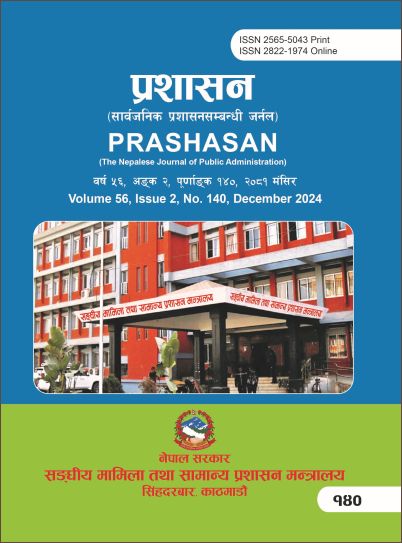Dispute Avoidance in Construction Contract: Analyzing the NEC Form of Contract
DOI:
https://doi.org/10.3126/prashasan.v56i2.75336Keywords:
NEC contract, early warning, arbitration, dispute avoidance, risk management, contract managementAbstract
This study focuses on dispute avoidance in construction contracts, specifically through the implementation of the NEC (New Engineering Contract) system. The objective is to explore how the collaborative framework of NEC, which includes elements such as mutual trust, proactive communication, early warnings, and structured risk registers, and good faith clauses, can enhance project efficiency and reduce disputes. The methodology involves a qualitative analysis of existing literature, comparing the NEC system with Nepal’s traditional procurement laws, which are often less structured and prone to disputes. The findings suggest that NEC’s proactive approach significantly reduces conflicts by fostering clear communication and equitable risk distribution. Additionally, the emphasis on early warning systems and risk management allows for better conflict resolution before issues escalate. The study highlights that the adoption of the NEC system would align the Nepalese construction industry with international standards, leading to cost reductions and improved project outcomes. The implications of the study recommend the integration of NEC methodologies in Nepal’s public procurement system to ensure smoother project execution, reduce legal disputes, and increase overall industry efficiency. The research advocates for a shift towards more structured and collaborative contract frameworks to enhance the construction sector’s competitiveness and global integration.
Downloads
Downloads
Published
How to Cite
Issue
Section
License
- The copyright of published materials of the journal remains with Ministry of Federal Affairs and General Administration.
- The published article cannot be reproduced or copied commercially by any person or institution but it can be used non-commercially for academic, research and training purpose providing proper citation is given.




